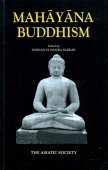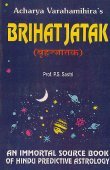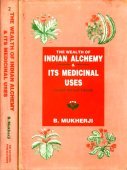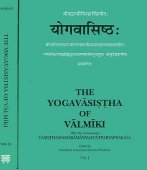Bhatta, Bhaṭṭā, Bhaṭṭa, Bhattā, Bhāṭṭa: 28 definitions
Introduction:
Bhatta means something in Buddhism, Pali, Hinduism, Sanskrit, the history of ancient India, Marathi, Jainism, Prakrit, Hindi, biology. If you want to know the exact meaning, history, etymology or English translation of this term then check out the descriptions on this page. Add your comment or reference to a book if you want to contribute to this summary article.
Alternative spellings of this word include Bhatt.
In Hinduism
Natyashastra (theatrics and dramaturgy)
Source: Wisdom Library: Nāṭya-śāstraBhaṭṭa (भट्ट, “sire”) refers to a specific “mode of address” (nāman) used in drama (nāṭya), according to Nāṭyaśāstra chapter 19. Bhaṭṭa is used by servants to address the overlord of other kings.

Natyashastra (नाट्यशास्त्र, nāṭyaśāstra) refers to both the ancient Indian tradition (shastra) of performing arts, (natya—theatrics, drama, dance, music), as well as the name of a Sanskrit work dealing with these subjects. It also teaches the rules for composing Dramatic plays (nataka), construction and performance of Theater, and Poetic works (kavya).
Purana and Itihasa (epic history)
Source: Academia.edu: Tantric elements in Kalhaṇa’s RājataraṅgiṇīThe sorceress Bhaṭṭā sacrifices king Baka to a circle of goddesses (devīcakra), to gain superhuman powers. The memory of this event is kept alive by the deity Śatakapāleśa, the circle of mothers and a rock bearing the prints of Bhaṭṭā’s knees (when she flew up into the sky) at the monastery of Kherī. See O. Serbaeva Yoginī s p. 193. (See Rājataraṅgiṇī verse 1.331)

The Purana (पुराण, purāṇas) refers to Sanskrit literature preserving ancient India’s vast cultural history, including historical legends, religious ceremonies, various arts and sciences. The eighteen mahapuranas total over 400,000 shlokas (metrical couplets) and date to at least several centuries BCE.
Arthashastra (politics and welfare)
Source: Wisdom Library: ArthaśāstraBhaṭṭa (भट्ट) refers to a “minstrels” and represents an official title used in the political management of townships in ancient India. Officers, ministers, and sovereigns bearing such titles [eg., Bhaṭṭa] were often present in ancient inscriptions when, for example, the king wanted to address his subjects or make an important announcement.
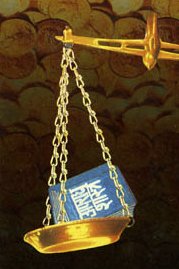
Arthashastra (अर्थशास्त्र, arthaśāstra) literature concerns itself with the teachings (shastra) of economic prosperity (artha) statecraft, politics and military tactics. The term arthashastra refers to both the name of these scientific teachings, as well as the name of a Sanskrit work included in such literature. This book was written (3rd century BCE) by by Kautilya, who flourished in the 4th century BCE.
Kavya (poetry)
Source: OpenEdition books: Vividhatīrthakalpaḥ (Kāvya)Bhaṭṭa (भट्ट) in Prakrit refers to a “panegyrist bard”, as is mentioned in the Vividhatīrthakalpa by Jinaprabhasūri (13th century A.D.): an ancient text devoted to various Jaina holy places (tīrthas).—(Sircar 1966 p. 52; Balbir 1982 p. 68); also “respectful title” applied to high personages: -brahmanes 507-508 [(61) 107.5, 107.13], § 1; -masters jaina 404 [(47) 89.11], § b (Sircar 1966 p. 51);

Kavya (काव्य, kavya) refers to Sanskrit poetry, a popular ancient Indian tradition of literature. There have been many Sanskrit poets over the ages, hailing from ancient India and beyond. This topic includes mahakavya, or ‘epic poetry’ and natya, or ‘dramatic poetry’.
Shaivism (Shaiva philosophy)
Source: Google Books: Manthanabhairavatantram (shaivism)Bhaṭṭa (भट्ट) refers to one of the twelve disciples of Matsyendranātha, according to Abhinava in his Tantrāloka verse 29.25-43.—Matsyendranātha and his consort had twelve disciples. Out of these twelve ‘princes’ (rājaputra), six were ‘celibate’, that is, they did not have spiritual offspring. The other six founded the six lineages (ovalli also called kulas) mentioned above. They are worshipped along with Matsyendranātha and his consort in the Wheel of the Siddhas at the beginning of the Kaula ritual described by Abhinava in his Tantrāloka. These six—[e.g., Bhaṭṭa]—are celibate and so do not possess authority, as authority is the expansion of vitality along the path of Kula.

Shaiva (शैव, śaiva) or Shaivism (śaivism) represents a tradition of Hinduism worshiping Shiva as the supreme being. Closely related to Shaktism, Shaiva literature includes a range of scriptures, including Tantras, while the root of this tradition may be traced back to the ancient Vedas.
General definition (in Hinduism)
Source: WikiPedia: HinduismBhatta meaning a priest or scribe in Sanskrit, is a surname common in most parts of India. This is title given to learned Brahmins. A predominantly Hindu last name, it is found most commonly in the states of Rajasthan, Gujarat, Haryana, Jammu and Kashmir, Punjab, Madhya Pradesh, Uttarakhand, Uttar Pradesh, Bihar and in West Bengal (as Bhattācharya) and some parts of Karnataka.
In Buddhism
Theravada (major branch of Buddhism)
Source: Pali Kanon: Pali Proper NamesSee Hattha.
Theravāda is a major branch of Buddhism having the the Pali canon (tipitaka) as their canonical literature, which includes the vinaya-pitaka (monastic rules), the sutta-pitaka (Buddhist sermons) and the abhidhamma-pitaka (philosophy and psychology).
India history and geography
Source: Cologne Digital Sanskrit Dictionaries: Indian Epigraphical GlossaryBhaṭṭa.—(IE 8-3), cf a-caṭṭa-bhaṭṭa-praveśa (IE 8-5); same as Bhaṭa of earlier records; but rarely distinguished from Bhaṭa, Bhaṭṭa in that ease meaning ‘a minstrel’. (CII 3, 4; etc.), a title of respect attached to the names of learned Brāhmaṇas. (IE 8-3), a minstrel. Note: bhaṭṭa is defined in the “Indian epigraphical glossary” as it can be found on ancient inscriptions commonly written in Sanskrit, Prakrit or Dravidian languages.
--- OR ---
Bhaṭṭā.—(Bhaṭṭāº) (PJS), abbreviation of Bhaṭṭāraka (in medieval Jain inscriptions); an epithet of Jain teachers. Note: bhaṭṭā is defined in the “Indian epigraphical glossary” as it can be found on ancient inscriptions commonly written in Sanskrit, Prakrit or Dravidian languages.

The history of India traces the identification of countries, villages, towns and other regions of India, as well as mythology, zoology, royal dynasties, rulers, tribes, local festivities and traditions and regional languages. Ancient India enjoyed religious freedom and encourages the path of Dharma, a concept common to Buddhism, Hinduism, and Jainism.
Biology (plants and animals)
Source: Wisdom Library: Local Names of Plants and DrugsBhatta in the Kannada language is the name of a plant identified with Oryza sativa L. from the Poaceae (Grass) family. For the possible medicinal usage of bhatta, you can check this page for potential sources and references, although be aware that any some or none of the side-effects may not be mentioned here, wether they be harmful or beneficial to health.
Source: Google Books: CRC World Dictionary (Regional names)Bhatta in India is the name of a plant defined with Oryza sativa in various botanical sources. This page contains potential references in Ayurveda, modern medicine, and other folk traditions or local practices It has the synonym Oryza glutinosa Lour. (among others).
Example references for further research on medicinal uses or toxicity (see latin names for full list):
· Kromosomo
· Acta Genetica Sinica (1984)
· Japanese Journal of Genetics (1991)
· Species Plantarum (1753)
· Indian Journal of Genetics and Plant Breeding (1965)
· Chin. J. Rice Sci. (1996)
If you are looking for specific details regarding Bhatta, for example diet and recipes, pregnancy safety, chemical composition, health benefits, extract dosage, side effects, have a look at these references.

This sections includes definitions from the five kingdoms of living things: Animals, Plants, Fungi, Protists and Monera. It will include both the official binomial nomenclature (scientific names usually in Latin) as well as regional spellings and variants.
Languages of India and abroad
Pali-English dictionary
Source: BuddhaSasana: Concise Pali-English Dictionarybhatta : (nt.) boiled rice; food; meal.
Source: Sutta: The Pali Text Society's Pali-English DictionaryBhatta, (nt.) (cp. Epic & Class. Sk. bhakta, orig. pp. of bhajati) feeding, food, nourishment, meal Dh. 185; Pug. 28, 55; J. II, 15; V, 170 (bhatta-manuñña-rūpaṃ for bhattaṃ-); Vism. 66 (where 14 kinds enumerated, i.e. saṅgha°, uddesa° etc.); Sdhp. 118.—ucchiṭṭha° food thrown away PvA. 173; uddesa° special food Vin. I, 58=96, cp. II. 175; devasika° daily food (as fee or wages) DA. I, 296 (=bhatta-vetana); dhura° a meal to which a bhikkhu is invited as leader of others, i.e. a responsible meal J. I, 449; III, 97 (v. l. dhuva°); dhuva° constant supply of food Vin. I, 25, 243.

Pali is the language of the Tipiṭaka, which is the sacred canon of Theravāda Buddhism and contains much of the Buddha’s speech. Closeley related to Sanskrit, both languages are used interchangeably between religions.
Marathi-English dictionary
Source: DDSA: The Molesworth Marathi and English Dictionarybhaṭṭa (भट्ट).—m (S) A learned or literary man, one conversant with the philosophical systems. The word is added as a title to the names of learned Brahmans. 3 (Used for bhaṭa) A Brahman, esp. one that subsists by begging.
--- OR ---
bhaṭṭā (भट्टा).—m ( H) A covered earthen vessel containing fire.
--- OR ---
bhattā (भत्ता).—m ( or H Batta.) An allowance beyond the settled rate of pay given on occasions of extraordinary service (as to troops in the field, servants, hammals): an allowance for his subsistence made to a Government-officer, by the person to whom he is sent, for as many days as he detains him: allowance made by a creditor to one detained by him in prison: subsistence-money generally to prisoners, to attending witnesses, to peons executing processes &c. &c.
Source: DDSA: The Aryabhusan school dictionary, Marathi-Englishbhaṭṭa (भट्ट).—m A learned man. See bhaṭa.
--- OR ---
bhattā (भत्ता).—m An allowance, batta.
Marathi is an Indo-European language having over 70 million native speakers people in (predominantly) Maharashtra India. Marathi, like many other Indo-Aryan languages, evolved from early forms of Prakrit, which itself is a subset of Sanskrit, one of the most ancient languages of the world.
Sanskrit dictionary
Source: DDSA: The practical Sanskrit-English dictionaryBhaṭṭa (भट्ट).—[bhaṭ-tan]
1) A lord, master (used as a title of respect in addressing princes).
2) A title used with the names of learned Brāhmaṇas; भट्टगोपालस्य पौत्रः (bhaṭṭagopālasya pautraḥ) Mālatīmādhava (Bombay) 1; so कुमारिलभट्टः (kumārilabhaṭṭaḥ) &c.
3) Any learned man or philosopher.
4) A kind of mixed caste, whose occupation is that of bards or panegyrists; क्षत्रियाद्विप्रकन्यायां भट्टो जातोऽनुवाचकः । वैश्यायां शूद्रवीर्येण पुमानेको बभूव ह । स भट्टो वाव- दूकश्च सर्वेषां स्तुतिपाठकः (kṣatriyādviprakanyāyāṃ bhaṭṭo jāto'nuvācakaḥ | vaiśyāyāṃ śūdravīryeṇa pumāneko babhūva ha | sa bhaṭṭo vāva- dūkaśca sarveṣāṃ stutipāṭhakaḥ) || Brav. P.
5) A bard, panegyrist.
Derivable forms: bhaṭṭaḥ (भट्टः).
--- OR ---
Bhāṭṭa (भाट्ट).—[bhaṭṭasyānuyāyī, aṇ] A follower of Bhaṭṭa, a follower of that school of the Mīmāṃsā philosophy which was founded by Kumārila Bhaṭṭa.
Derivable forms: bhāṭṭaḥ (भाट्टः).
Source: Cologne Digital Sanskrit Dictionaries: Edgerton Buddhist Hybrid Sanskrit DictionaryBhaṭṭā (भट्टा).—(f., which I do not find recorded, to bhaṭṭa, title of respect), (1) lady (applied to a queen): bhaṭṭe, voc., Mahāvastu ii.445.6; 447.7 (em); bhaṭṭāye, instr., 445.14 (em.); (2) name of a yakṣiṇī (compare the yogeśvarī named Bhaṭṭā, Rājataraṅginī, ed. Stein, i.331): (Ārya-)Mañjuśrīmūlakalpa 564.25 (read bhaṭṭā for °ṭa); 565.20 (°ṭe, voc.).
Source: Cologne Digital Sanskrit Dictionaries: Shabda-Sagara Sanskrit-English DictionaryBhaṭṭa (भट्ट).—m.
(-ṭṭaḥ) 1. A philosopher, a learned man, especially one conversant with the philosophical systems. 2. An enemy. 3. Best excellent. 4. Authority. 5. A bard in general. E. bhaṭa-tan .
Source: Cologne Digital Sanskrit Dictionaries: Benfey Sanskrit-English DictionaryBhaṭṭa (भट्ट).— (a dialectical form based on bhartā, nom. sing. of bhartṛ), m. 1. A philosopher, a learned man, [Rājataraṅgiṇī] 5, 66. 2. An enemy. 3. Authority. 4. Best.
--- OR ---
Bhāṭṭa (भाट्ट).—i. e. bhaṭṭa + a, m. A follower of Kumārila Bhaṭṭa, [Vedāntasāra, (in my Chrestomathy.)] in
Bhaṭṭa (भट्ट).—[masculine] lord, [Epithet] of learned men (°— & —° in names).
--- OR ---
Bhāṭṭa (भाट्ट).—[masculine] a follower of (Kumārila) Bhaṭṭa; [neuter] K's work.
Source: Cologne Digital Sanskrit Dictionaries: Aufrecht Catalogus Catalogorum1) Bhaṭṭa (भट्ट) as mentioned in Aufrecht’s Catalogus Catalogorum:—poet. [Sūktikarṇāmṛta by Śrīdharadāsa]
2) Bhaṭṭa (भट्ट):—a title of Kumārila by which he is often quoted. Oxf. 247^a. 265^a.
Bhaṭṭa has the following synonyms: Bhaṭṭācārya.
3) Bhaṭṭa (भट्ट):—on alaṃkāra. Quoted in Alaṃkārasarvasva Oxf. 210^a.
4) Bhaṭṭa (भट्ट):—Mokṣavādamīmāṃsā.
Source: Cologne Digital Sanskrit Dictionaries: Monier-Williams Sanskrit-English Dictionary1) Bhaṭṭa (भट्ट):—m. ([from] bhartṛ) lord, my lord (also [plural] and -pāda m. [plural]; according to, [Daśarūpa ii, 64], a title of respect used by humble persons addressing a prince; but also affixed or prefixed to the names of learned Brāhmans, e.g. kedāra-, govinda-bh etc., or bhaṭṭa-kedāra etc., below, the proper name being sometimes omitted e.g. bhaṭṭa = kumārila-bh; also any learned man = doctor or philosopher), [Rājataraṅgiṇī; Vetāla-pañcaviṃśatikā] etc.
2) Name of a [particular] mixed caste of hereditary panegyrists, a bard, encomiast, [cf. Lexicographers, esp. such as amarasiṃha, halāyudha, hemacandra, etc.]
3) an enemy (?), [Horace H. Wilson]
4) often [wrong reading] for bhaṭa
5) Bhaṭṭā (भट्टा):—[from bhaṭṭa] f. Name of an enchantress, [Rājataraṅgiṇī]
6) Bhaṭṭa (भट्ट):—mf(ā)n. venerable, [cf. Lexicographers, esp. such as amarasiṃha, halāyudha, hemacandra, etc.]
7) Bhāṭṭa (भाट्ट):—m. a follower of Bhaṭṭa (id est. Kumārila-bh°), [Vedāntasāra]
8) [plural] Name of a people, [Rājataraṅgiṇī]
9) n. the work of Bh°, [Pratāparudrīya [Scholiast or Commentator]]
Source: Cologne Digital Sanskrit Dictionaries: Yates Sanskrit-English DictionaryBhaṭṭa (भट्ट):—(ṭṭaḥ) 1. m. A philosopher; an enemy; excellence; authority.
Source: DDSA: Paia-sadda-mahannavo; a comprehensive Prakrit Hindi dictionary (S)Bhaṭṭa (भट्ट) in the Sanskrit language is related to the Prakrit word: Bhaṭṭa.
[Sanskrit to German]
Sanskrit, also spelled संस्कृतम् (saṃskṛtam), is an ancient language of India commonly seen as the grandmother of the Indo-European language family (even English!). Closely allied with Prakrit and Pali, Sanskrit is more exhaustive in both grammar and terms and has the most extensive collection of literature in the world, greatly surpassing its sister-languages Greek and Latin.
Hindi dictionary
Source: DDSA: A practical Hindi-English dictionary1) Bhaṭṭa (भट्ट) [Also spelled bhatt]:—(nm) a bard; scholarly Brahman.
2) Bhaṭṭā (भट्टा):—(nm) see [bhaṭṭhā].
3) Bhattā (भत्ता):—(nm) an allowance.
...
Prakrit-English dictionary
Source: DDSA: Paia-sadda-mahannavo; a comprehensive Prakrit Hindi dictionary1) Bhaṭṭa (भट्ट) in the Prakrit language is related to the Sanskrit word: Bhaṭṭa.
2) Bhatta (भत्त) also relates to the Sanskrit word: Bhakta.
3) Bhatta (भत्त) also relates to the Sanskrit word: Bhūta.
Prakrit is an ancient language closely associated with both Pali and Sanskrit. Jain literature is often composed in this language or sub-dialects, such as the Agamas and their commentaries which are written in Ardhamagadhi and Maharashtri Prakrit. The earliest extant texts can be dated to as early as the 4th century BCE although core portions might be older.
Kannada-English dictionary
Source: Alar: Kannada-English corpusBhaṭṭa (ಭಟ್ಟ):—
1) [noun] a learned man; a doctor.
2) [noun] a brāhmaṇa who scrupulously and punctiliously follows the religion as prescribed.
3) [noun] a man emplolyed in royal courts to herald the titles of a king.
4) [noun] a messenger; an errand.
5) [noun] a priest in a temple.
6) [noun] a professional cook.
7) [noun] a surname used by some brāhmaṇa families.
8) [noun] Kumārila Bhaṭṭa, a celebrated teacher of the Mīmāṃsa philosopy and opponent of the Buddhism.
9) [noun] a man as related to a woman whom he is married to; a husband.
--- OR ---
Bhatta (ಭತ್ತ):—
1) [noun] the starchy seeds or grain of an annual marsh grass oryza sativa of Poaceae family, cultivated in warm climates and used for food; paddy.
2) [noun] the plant itself.
--- OR ---
Bhatta (ಭತ್ತ):—
1) [noun] the paddy produced (from a field, during a season).
2) [noun] a means of support or sustenance that one has to provide or has provided another with, for life; a life-annuity; maintenance.
3) [noun] a sum of money allotted or granted to a person either to meet a particular expense or on regular basis to meet general expenses; an allowance.
--- OR ---
Bhāṭṭa (ಭಾಟ್ಟ):—[adjective] of or related to Kumārila Bhaṭṭa or the Mīmāṃsa philosophy propounded by him.
--- OR ---
Bhāṭṭa (ಭಾಟ್ಟ):—[noun] a follower of Kumārila Bhaṭṭa or the Mīmāṃsa philosophy propounded by him.
Kannada is a Dravidian language (as opposed to the Indo-European language family) mainly spoken in the southwestern region of India.
See also (Relevant definitions)
Starts with (+168): Bhatta arka, Bhatta balabhadra, Bhatta bhaskara, Bhatta bhaskara pandita, Bhatta culitaka, Bhatta cunitaka, Bhatta damodara, Bhatta dhaneshvara, Bhatta gopala, Bhatta govardhana panaka, Bhatta govinda suri, Bhatta govindaraja, Bhatta haribhuta, Bhatta hemadri, Bhatta ishvarasvamin, Bhatta kallata, Bhatta kapardin, Bhatta karnataka, Bhatta keshava, Bhatta kshirasvamin.
Ends with (+488): Abbhatta, Abhatta, Abhirama bhatta, Acyuta bhatta, Acyutabhatta, Adhyayana-bhatta, Adigebhatta, Adityabhatta, Adugebhatta, Agantukabhatta, Agnihotra bhatta, Ananda bhatta, Ananta bhatta, Ananta yajvan kaviyasatabhatta, Anantabhatta, Andhukabhatta, Aniruddha bhatta, Annabhatta, Annambhatta, Apabhatta.
Full-text (+2480): Bhattadipika, Bhramana-bhatta, Bhattadesha, Berogari-bhatta, Bhattadinakara, Bhattabhaskara, Nirakshara-bhatta, Bhattalamkara, Bhattapaddhati, Bhatta-vritti, Bhattasamgraha, Jayanta Bhatta, Venkata Bhatta, Bhattashrishamkara, Meghabhatta, Bhattamalla, Bhattasarakarika, Bhattadipikanyakkara, Bhattadipikasamgraha, Tithinirnaya.
Relevant text
Search found 113 books and stories containing Bhatta, Bhaṭṭā, Bhaṭṭa, Bhattā, Bhāṭṭa; (plurals include: Bhattas, Bhaṭṭās, Bhaṭṭas, Bhattās, Bhāṭṭas). You can also click to the full overview containing English textual excerpts. Below are direct links for the most relevant articles:
Preceptors of Advaita (by T. M. P. Mahadevan)
The Concept of Sharira as Prameya (by Elizabeth T. Jones)
Pūrva Mīmāṃsa Philosophy < [Chapter 1]
Works on Nyāya < [Chapter 1]
The Nyāya philosophy < [Chapter 1]
A comparative study between Buddhism and Nyaya (by Roberta Pamio)
5.3. Perception of Cognition < [Chapter 4 - The Nyāya Theory of Perception]
5.2. Perception of Abhāva < [Chapter 4 - The Nyāya Theory of Perception]
1. Nyāya: A Brief Introduction < [Chapter 4 - The Nyāya Theory of Perception]
Chaitanya Bhagavata (by Bhumipati Dāsa)
Verse 2.6.172 < [Chapter 6 - The Lord’s Meeting with Advaita Ācārya]
Verse 1.13.19 < [Chapter 13 - Defeating Digvijayī]
Verse 1.13.128-129 < [Chapter 13 - Defeating Digvijayī]
Anumana in Indian Philosophy (by Sangita Chakravarty)
Classification of knowledge (2): Invalid Knowledge < [Chapter 1 - Introduction]
Vedic schools (3): The Mīmāṃsā-Vedānta < [Chapter 1 - Introduction]
Classification of knowledge (1): Valid Knowledge < [Chapter 1 - Introduction]
Impact of Vedic Culture on Society (by Kaushik Acharya)
Mingling of Cultures (M): The Śailodbhavas < [Chapter 4]
Sanskrit Inscriptions (J): The Rāṣṭrakūṭas < [Chapter 3]
3. The Donee Brāhmaṇas < [Chapter 2]
Related products
